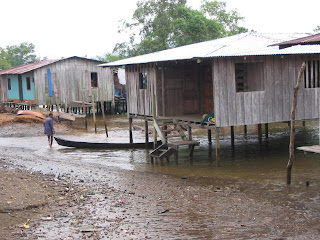
Use those Memorable Vacation Photographs in English Classes
Granted, you’ve accepted and applied that photographing your own “art” to accompany your teaching activities and lesson plans adds depth to your queries is an essential tool of an English as a foreign language teaching professional. Perhaps you have a specific idea or two specifically in mind. But why not add even greater range to your efforts “on location” and explode your options and possibilities? In part 1 of this two-part article, we looked at slants for photographing people pictures in a variety of ways. Here we’ll consider other options to help bolster your multi-media digital images. Use these ideas to expand your photo essay photographic range.
Food
While you’re away on vacation for goodness sake, don’t eat at the hotel restaurant everyday. Get out there and sample the local fare. Check out farmer’s markets and supermarkets too. Shoot food platters, local fruits and vegetables. I’m shamelessly notorious for taking photos of not only everything I eat, but shots of other people’s meals on occasion as well. If you don’t know the local foods chances are your readers won’t either. While you’re at it, get a few recipes too. Talk to the cook or chef (if allowed). And yes Bunky, get their pictures. If you discretely record your conversation, these interviews can fuel personality pieces for trade and technical publications dealing with that locale or theme area. In Oaxaca, Mexico, I actually had people coming up asking me to photograph and interview them. It provided me with enough raw input, quotes and photos to write more than 20 articles, readings and shorts from just that one trip. Along with a slew of great digital images too.
Architecture
A variety of local architectural styles might make for a good photo shoot. Architectural, building supply and construction publications are potential markets. Flower-adorned porches, balconies and staircases, decorative plants, gardens, leaves and blooms can all add a splash of nature to your portfolio. Storefronts or displays of goods can be editor-pleasing shots too.
On a recent trip, I noticed that an overwhelming number of houses were made of wood, from the most expensive-looking ones to the shabbiest and poorest abodes. I started shooting examples of different types of wooden homes along with architectural details of stairs, doors, balconies and trim winding up with scores of interesting shots that included a two-story house designed to look like a boat. The resulting multi-media package can be milked from now on without the need to travel again to the exotic location I shot from.
Nature
Visit the zoo, aviaries, wildlife preserves, gardens and other promoted sites. Use a fresh eye and your inquiring mind to generate questions, elicit opinions and capture quotations. I almost never miss a chance to spend time in the local zoo. When I heard of an “Iguana Park” in Cali, the Salsa music capitol of Colombia, I couldn’t resist. From Ambato, Ecuador to Philadelphia, Pennsylvania I’ve ogled animals of all types with photo ops leading to numerous assignments on creatures from Ants to Iguanas to Three-toed Sloths. Feature ideas and shorts for children’s English lessons, animal lover and personal travel readings with an “on location” flare await you on your next trip or vacation. They're a tremendous hit with EFL learners too, who genuinely respect the fact that you're sharing personal experiences and anecdotes with them.
Talk to People Whenever You Can
Talk with curators, animal keepers, biologists, environmentalists, horticulturalists and gardeners, local green thumbs – anyone who could add depth to your proposed digital images and readings. Don’t forget to photograph everyone you can – preferably “in action”. Get their contact information to expand their quotes and bios if you need to later.
Photograph People, Food, Nature and Architecture
So, English as a foreign language teachers, if you are traveling this vacation, by all means, take a camera or two along on your trip as part of your standard equipment. Shoot high-resolution digital photos. Shoot color slides and some prints too. Photograph people, food, nature and architecture. Record those interviews and quotes to flesh out and deepen your resource materials. Offer your EFL learners a multi-media English lesson plan that includes art, images, personal anecdotes and reading texts. You’ll find that your acceptance and English class participation just might start changing – for the better.
Prof. Larry M. Lynch is an EFL Teacher Trainer, Intellectual Development Specialist, author and speaker. He has written ESP, foreign language learning, English language teaching texts and hundreds of articles used in more than 125 countries worldwide. Get your FREE, pdf format report on CD or via e-mail, "Creative, Dynamic Ways to Motivate and Teach Diverse Groups of EFL Learners" by requesting the title at: lynchlarrym@gmail.com







No comments:
Post a Comment